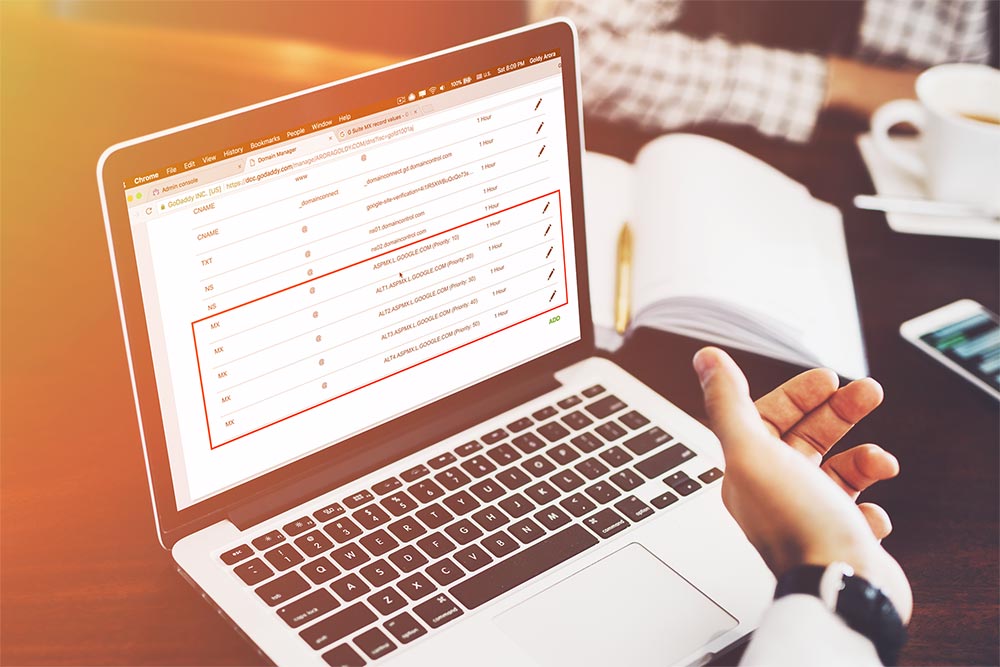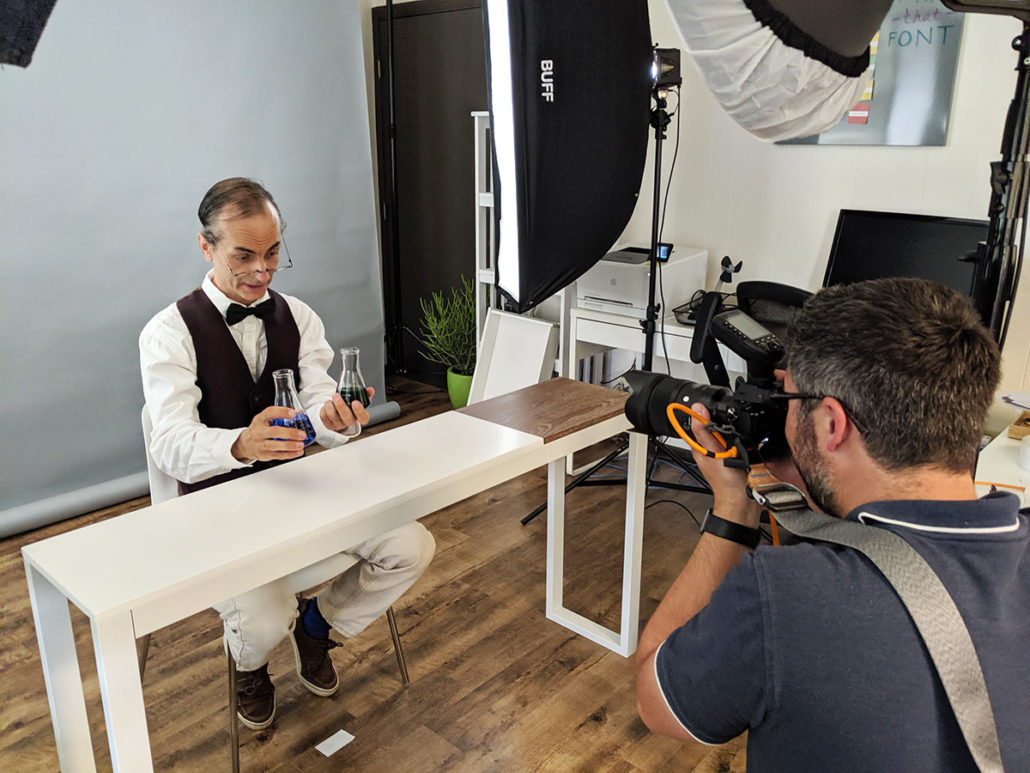10 Things to Do Before You Build a WordPress Website
Quick Links
Audio Overview generated by Notebook LM
So you want to build a WordPress website? It should be easy, right? That’s the idea. The platform is open source and accessible to anyone. And it may truly be a piece of cake for some folks.
But for people who don’t exactly identify as “tech savvy,” WordPress can be intimidating. It’s common to dive head-first into the website-building process…only to resurface weeks later overwhelmed and frustrated with not much to show for it.
Actual success with the WordPress website builder (or any website platform really) takes thoughtfulness, planning and preparation. For best results, there are specific steps you should take before building your site. And the following 10 things to do before you build a WordPress website apply whether you DIY or hire a professional.
Looking for more information on how to start a web design business? Check out our online course!
1. Nail Down Your Brand
Your brand is much more than your logo. Branding is at the heart of your business and what differentiates you from your competitors. It informs all your business decisions. So, it’s important to develop a strong brand foundation before you do anything else.
Dial in your brand before you build a WordPress website by following the steps below. When you finish, you’ll know how to get the best domain name, what to put on your business cards, and what your website and logo should look like.
Follow These Steps to Establish and Hone Your Brand
a) Take our brand archetype quiz to determine your brand’s “personality”
A distinct personality allows audiences to personify and emotionally relate to your brand. This emotional resonance drives brand loyalty. Brand personality also informs your color choices and how you write copy for your website.
b) Choose your brand’s core values
Our core values interactive exercise helps you create a powerful bedrock for decision making, culture shaping, recruiting and branding.
We recommend choosing 5 core values and then actually putting them on your website’s “About Us” page. Taking the time to spell out your values shows you’re a unique business with heart.
c) Establish your mission and vision statements
A strong mission statement and vision statement help guide your business decisions and other brand choices. They can also go on your website in some form.
Check out these inspiring mission and visitation statements to get some ideas. Once again, we recommend actually publishing your mission statement (and possibly your vision statement) on your website to give your customers a sense of why you do what you do.
As you write, consider using our Brand Voice tool to ensure the way you write is consistent and memorable.
d) Make foundational design decisions
What your brand looks like is important for attracting the right audience and creating a professional and pleasing user interface. The most important design decisions to make before you build a WordPress website are the following:
Get a logo.
One of the best sources for this is our logo store. These ready-made logos are sold only once, and are trademarkable! You can also try Fiverr, Looka, or Designcrowd. Avoid logos you won’t be able to trademark in the future, like those from Canva or stock websites.
Choose your fonts.
Whether you get them from your branding agency or graphic designer or from Google, find fonts that pair well with your logo and match the vibe of your brand archetype.
Choose your brand colors.
Ask your designer for the exact HEX codes from your logo so you can match your brand colors.
If you have big plans for expansion at this stage, make sure your company name is trademarkable. You’ll need a unique brand name if you’re planning to go big. This will impact intellectual property later. Read more about how to name your startup or brand.
e) Put it all together in a brand guidelines doc
Brand guidelines will codify much of the work you have already done, including documenting your brand colors, fonts, mission, vision, values, etc. Having everything together in one document means you can easily hand over your entire vision to a future designer or writer.
2. Buy Your Domain
Finished with your brand work? Then you’re ready to buy your domain.
There are hundreds of places to get your domain name, and most of the domain registrars offer similar pricing and experiences. We love Namecheap because it gives you free domain privacy.
Your domain registrar doesn’t have to be where you host your website. Most important is that you have access to advanced DNS records, which are important for setting up your email in the next step. Whichever domain registrar you choose, avoid getting your domain through a website builder like Wix or Squarespace. It’s best to keep your domain and email separate from your website platform so it’s easier to change later if needed.
Most domains are inexpensive, usually $10 – 15/year. But for a short one or one that someone already owns, you could spend big money on domains that are up for auction. (But please don’t do this until you’re very, very sure about your brand name!)
Domain Name Do’s:
- Keep it short, memorable, and easy-to-read
- Avoid hyphens
- Make sure it’s understandable when you spell or say it over the phone
- Take your time choosing a domain. Don’t rush it.
That said, if you DO know what you want and it’s available – grab it now!
3. Set Up Your Domain Email

The next thing to do before you build your WordPress website is to set up your domain email.
Throughout the life of your business, we recommend using your domain email instead of@gmail.com or@yahoo. (Example: info@mydomain.com) This kind of branded email reinforces your brand and is more memorable. Having a professional email address creates trust and credibility. It lets people know you’re serious and not a spammer or scammer.
Set up your domain email early on, because you’ll use it to create accounts later.
Most people set theirs up through Google Workspace or Microsoft 365. Whichever platform you choose, think about it carefully because it’s where all your files will live! You’re basically choosing whether you’ll use Microsoft or Google products in your business.
It takes a little effort, but if you get your domain email set up right in the beginning, you’ll be set for a long time to come!
4. Determine Which Pages You Need on Your WordPress Site
In WordPress, a page holds static content that doesn’t change very often. While a post reflects more in-the-moment content, such as blog posts, news, and promotions.
Your goal before you build a WordPress website yourself or hire a WordPress web design company is to map out the main pages your site needs.
To get some ideas, look at others’ websites. A good approach is to review 5 sites in your industry. Notice how they’re similar and different, what makes sense or what is confusing, what seems to be the most important content, etc. Keep in mind, it’s definitely OK to copy the general architecture or navigation of a website (if everyone is doing it, that means it is likely a good user experience), but don’t copy exact wording or design concepts from a competitor!
Standard Pages
When building a website, a few common pages include:
- Home — Convey to your customers that they’ve landed in the right place, and help them with navigation. Be crystal clear about what you sell and who you sell it to.
- Services / Products — Having a page for each service, sub-service and product is ideal.
- About Us — This is a great place to talk about mission, vision, and values.
- Contact — For SEO value, at least have your city listed, if not your full address. Also include your phone number and email address.
A testimonials or reviews page is also a fantastic addition to any business website to add “social proof” and build trust.
E-Commerce

If you’re in e-commerce, determine how many products you have and which categories those belong in. Also, think through how pricing and shipping works. This way your website developer can quickly identify and implement the specific e-commerce functionality your site needs.
Blog Posts and Other Content
Generally, when it comes to search engine optimization, more pages are better. But this can get expensive and time-consuming. So start small. You can always add more content later.
5. Write Your Website Copy
We know, we know… writing can be intimidating. But you’ve already done some of the important legwork! You know which web pages you need, your brand archetype, mission and vision.
Here are some other things to consider as you write copy and build your WordPress website.
Brand Voice
In any and all copy, stay true to your brand voice. Be original in your tone. Strive to sound like your brand — and no other.
If you need help sounding like you, then work with our brand archetype word bank. This tool has lists of words you can use depending on the result of your brand archetype quiz.
Also take advantage of our brand voice app to define your voice further. If you hire a copywriter, share your results with them. If you’re a solopreneur, or creating a different personality for your business, these tools can help you check your writing later.
Finally, think through how your brand personality characteristics translate to your brand voice. For example, if your brand is knowledgeable, do you use big words or industry jargon? Or are you an expert without being pretentious?
Know Who You’re Writing For
No matter which tools you use, always make sure you’re writing for your audience, not for yourself. Keep the problem that they’re trying to solve at the forefront as you show how your product or service helps them solve that problem.
It’s easy to forget to explain basic things because you know your business so well. So try to have someone else read the copy — and make sure they can understand what you’re saying.
Make things clear to your audience throughout your website, especially on your homepage. If someone can’t tell what you sell right away, then you need to rewrite that copy.
Writing for Search Engines
SEO is important for getting found online, but it often takes months to start working for you. So, get started with the basics right away.
The two main things to do are:
- Use SEO keywords in your copy
- Think about the informational architecture of your website as you link to other content
Look at your competitors for some ideas, but do NOT copy/paste from someone else’s site! This will only result in penalties from Google.
6. Assemble or Get Photos
Having good brand imagery and high quality photos are an essential part of selling, especially in e-commerce. So, hire a professional photographer with experience in your field if your budget allows.
If budget’s an issue — or you simply like the creative freedom — take your own photos using these brand photoshoot tips. The most important tip is to be in good natural light, so you get the best result from your phone or camera.
Suggested Shot List:
- Headshots (For a service-based business, these are essential for building trust in your brand)
- Lifestyle photos of your office
- Product photos
- People using your product
- Working with customers
If you’re selling something that’s hard to photograph, hire a graphic designer to create graphics and icons that represent your product or service.
Stock Photo Tips
When you can’t take your own photos or hire a photographer, go to a stock photo site.
You might find what you need for free, depending on the nature of your business.
Some popular stock photo sites are:
For good stock photos, don’t think too literally about what you’re trying to express. “Bad” stock photos look unnatural, with people looking straight at the camera with exaggerated emotion.
Instead, find real people in real environments. Look for something that matches the vibe and aesthetic of your brand. Use a batch of photos that look like they’re from the same photographer and photo shoot when possible.
7. Get Your Credentials in Order
A big challenge for online business owners is keeping track of passwords. Warning: Don’t just save them on your browser.
As you set up your business, be sure to capture the following for all your accounts:
- Usernames
- Passwords (choose difficult ones so you don’t get hacked or compromised)
- PIN numbers
- Security credentials or questions
Where’s a safe place to store these? Hint: It’s not a “passwords for important accounts” document on your desktop.
Instead, the best options include a paper backup or software like LastPass for password management. Whichever system you choose, keep all your account information well-documented, secure and up-to-date.
If you hire a company or a tech person to help you, you’ll need to hand over a lot of those credentials. Saving them all in one place now saves you hassle later.
Getting organized like this also familiarizes you with the tech components of your WordPress website. You’ll gain a better sense of what hosting, domains, and plugins are by setting up some of these accounts yourself.
Be as descriptive as possible in your notes about what the passwords and accounts are for. And keep track of all payment details, so you don’t miss payments or renewals in the future.
8. Assess Tech Needs Beyond WordPress
We think WordPress is the best website-building platform for so many reasons. But we especially love that you can scale and customize your WordPress website to your heart’s content. Ready-made integrations and plugins are what make this possible.
Think through the desired functionality and features you want before you build your WordPress website. You don’t need to decide on every app or extension just yet, but it’s great to know what you generally want just in case you or your web designer decide that a platform like Shopify or Wix might be better for one reason or another.
Then before deciding, consider what of those features are “must-haves” versus “nice-to-haves.”
Here are some things to consider:
e-Commerce / Retail Store
For a retailer that is building an e-commerce store, decide which Point of Sale (POS) system to set up. Ensure your choice works with your WordPress site so inventory tracking is easier.
Verify that there’s a WordPress plugin for your POS. This way you avoid paying someone for a custom integration — which starts at $10k. Hint: Google “My POS System WordPress plugin” replacing “my POS System” with the name of your POS system.
Email Marketing
If someone fills out a form on your website, you can capture that information and automatically add it to your CRM or email marketing platform.
For basic email marketing we love Mailchimp and Constant Contact.
Plan to go heavy on email marketing? Then you may want to integrate a Customer Relation Management (CRM) software such as Hubspot or Keap (formerly InfusionSoft). Most of the popular CRMs have WordPress plugins that integrate with your site.
Appointment Scheduling Features
For booking and scheduling, the best solution is usually a third-party tool like Calendly or Acuity. These often include payment options, where you can process payments through a plugin, widget, or a third party tool. Just make sure the one you choose integrates with the WordPress before you start building the website.
9. Prepare for a Lead Generation Tool
Once your target customers land on your site — what do you plan to do with them?
No matter how else you sell, delight, and inform your visitors — we recommend you capture their email address.
Customer email addresses are the backbone of an online business. They help you form a long-term relationship with your customer. And email yields one of the highest marketing ROI’s of any channel.
Given the importance of email marketing, it’s important to start collecting email addresses right away. You can always decide how you want to market to them later.
Sold on the idea? Great! Here’s how to get set up to capture customer email addresses:
- Add an email collection form to your site. This is where a website visitor enters their name and email address to get something free from you.
You can set this up through Mailchimp or another email service provider directly. Or you can use a built-in WordPress form. Check with your specific email service provider or tech person for instructions on getting everything integrated.
- Create and set up a lead magnet. A lead magnet is high value, free content that’s hidden behind “a gate.” Making people pass through the gate (aka give you their email address) helps you build your email list and get potential clients.
Just remember the content won’t help your SEO if it’s not on the website.
Some of the easiest lead magnets to set up and deliver are email drip campaigns and simple PDF documents. A short list of lead magnet ideas include:
- Tips and tricks
- Checklists
- Case studies
- Buyers Guides
- Tools, templates, spreadsheets, etc.
10. Hire a WordPress Web Designer to Put it All Together
You’re probably realizing by now that building an amazing WordPress website is a lot of work!
At this point, if you decide to build your WordPress website yourself, read Top 5 Mistakes Made by DIY Website Builders article and consider taking a course on how to do it. (Look into Udemy and Skillshare for starters.)
On the other hand, you may decide you’d be better off hiring a WordPress web design company to do everything for you. Hiring a web designer can be expensive, but because you’ve already prepared and done your homework, you will drastically reduce your costs and the chance of something going way over budget or beyond your deadline.
Before you go out and get quotes from web designers, read our guide to hiring a web designer.
Why go through the other steps first if you’re going to hire someone to help you build a WordPress website? If you can deliver the brand guidelines, site architecture, copy, and photos per the steps above, you’ll get a less expensive website that’s built in less time. Because you’ve already done a ton of preparation, your website building process will be as smooth as possible!
Lean into your designer for their expertise in plugins and integrations. A professional’s advice will help you make better decisions.
You Have Everything You Need to Build a WordPress Website
If you follow all the steps in this list you’re further ahead than 99% of people looking to build a WordPress website. You almost can’t get it wrong. So, take your time, and keep that head up. Keep rocking down this list, and — go get ‘em!
And remember, when you’re ready for help, our web designers in Madison, WI are happy to assist you!
P.S. Once your site is up, read 10 Things to Do After Your Website Launch! Sigh, the work is never done. 🙂




